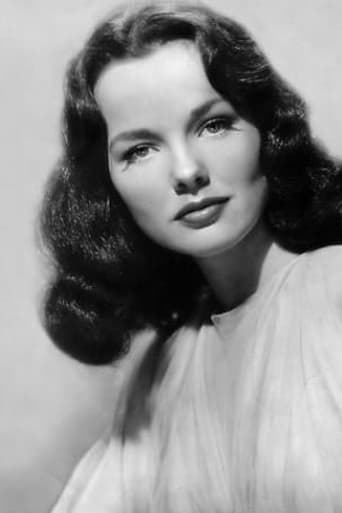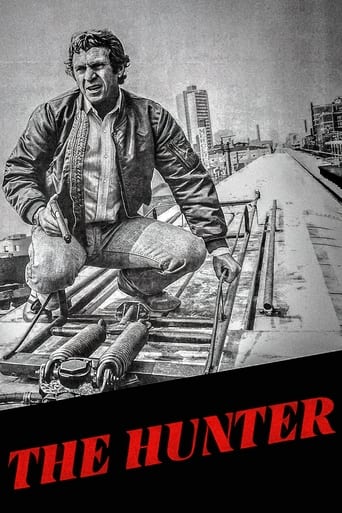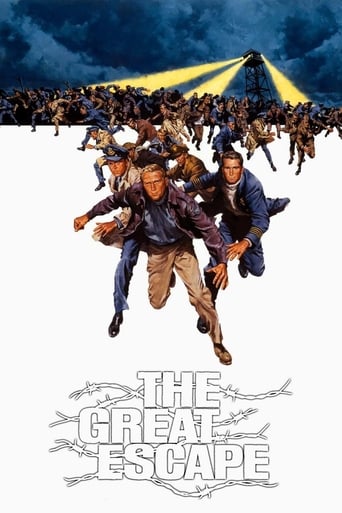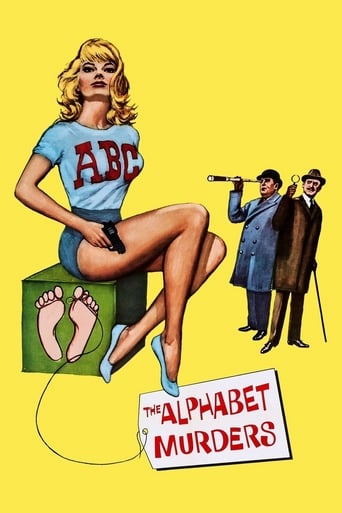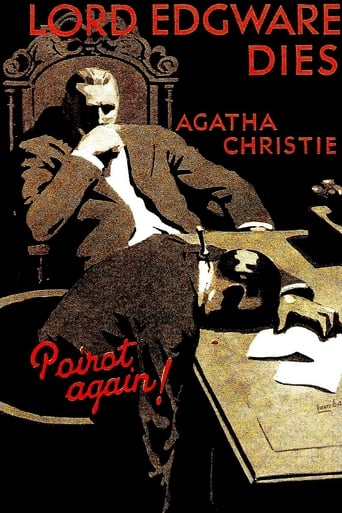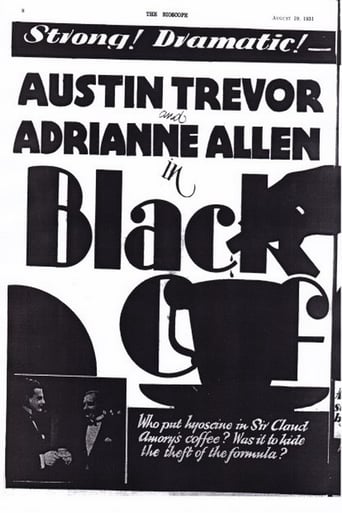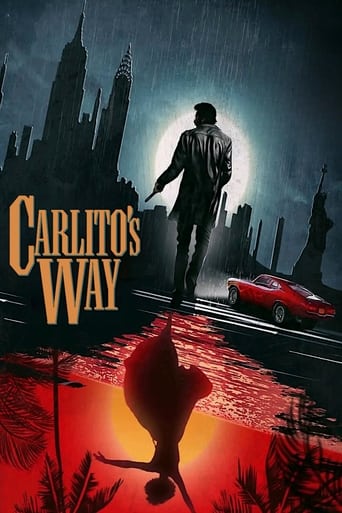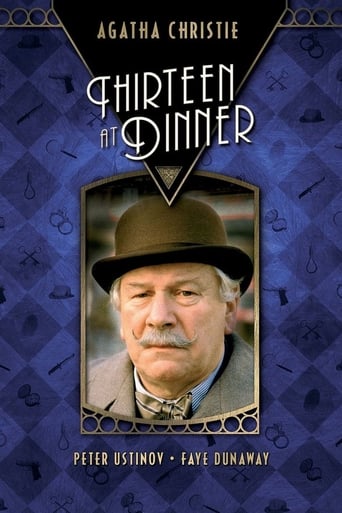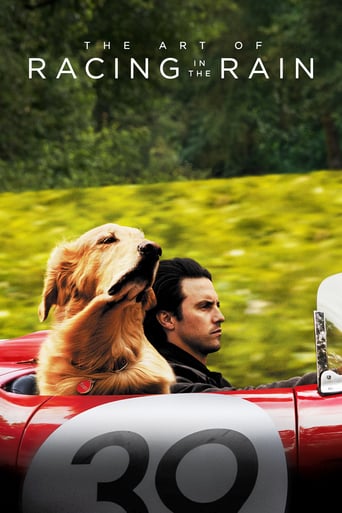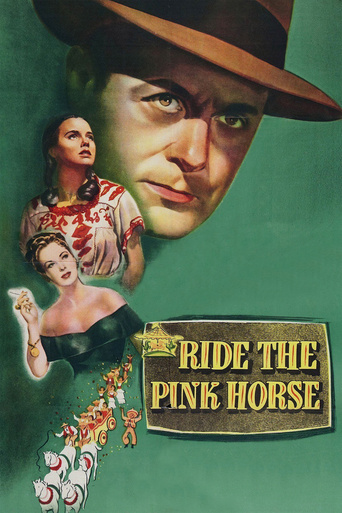

Ride the Pink Horse (1947)
A con man tries to blackmail a Mexican gangster.
Watch Trailer
Cast


Similar titles
Reviews
Robert Montgomery starred in and directed this pseudo-noir set in a rural New Mexican town. Montgomery plays a man on the trail of a gangster with the intention of avenging the death of a war buddy at his hands. Once there, he collides with an FBI agent also on the trail, and gets help from a local carousel barker and an enigmatic young Native American woman. The revenge plot is standard issue crime movie stuff, and while it's well directed and paced by Montgomery, it's nothing special. But an unexpectedly delightful addition to the film, and one that sets it apart from countless other films from the same time period and genre, comes from the relationship between Montgomery's character and the two locals. Thomas Gomez was Oscar nominated for his performance as Pancho, and Wanda Hendrix is marvelous as Pila, Montgomery's his girl Friday. The movie avoids making stereotypes out of them and instead creates robust, three-dimensional characters. The actors are wonderful, all three of them, and the chemistry they build together turns "Ride the Pink Horse" into one of the more memorable films noir from that genre's most fertile era.Grade: A
The grim, enigmatic, but compelling Universal-International Pictures release "Ride the Pink Horse" ranks as a robust, first-rate, post-World War II, film noir melodrama. A hard-boiled former serviceman sets out to blackmail a wealthy, white-collar crook that had one of his war-time pals murdered. The action unfolds in a small, anonymous, New Mexico town named San Pablo during an annual festival, but it is fairly obvious that lenser Russell Metty photographed the action on a Universal backlot. Interestingly enough, the studio imported the carousel that figures prominently in the film title. The setting lends a decidedly Hispanic quality to the film so that it resembles a contemporary western. Later, after our hero runs afoul of the villains, he has to rely on Mexicans to conceal him from the villain's thugs, kind of like Clint Eastwood had to do in "A Fistful of Dollars." Our roughshod hero is named Gagin; in Dorothy B. Hughes' novel, she simply referred to him as Sailor. Gagin (Robert Montgomery of "Night Must Fall") climbs off a Greyhound bus, stashes a canceled $100-thousand check in a bus station pay locker, hides the key, and then tracks down the villain at the local hotel. The first scene when he arrives in town and conceals the check in the locker is brilliantly done in one long, unbroken take that follows Gagin inside and back outside without any physical cuts. Gagin folds a blank piece of stationary, stuffs it into an envelope, and then scrawls the villain's name on it. After he hands the letter to the hotel desk clerk, Gagin watches as the clerk inserts the letter into a numbered slot where mail is place. Eventually, Gagin will demand $30-thousand in exchange for the infamous check. He packs an automatic pistol, and he is pretty savvy until he tries to play the game according to the villain's rules. Along the way, Gagin befriends a cheerful, tubby Mexican, Pancho (Thomas (Gomez in an Oscar nominated role), who operates a carousel. Pancho treats Gagin as a friend and even lets him sleep in his bed when our hero cannot find a hotel room in town. Hugo (Fred C. Clark in a non-comedic role) is the chief villain, and he is accustoming to getting anything that he wants. He smokes cigars and wears a hearing aid. We're never told anything about this gizmo, but in some ways it makes Hugo seem like even more sinister. If villains are supposed to look abnormal, then the hearing aid serves to characterize Hugo as a bad guy. Hugo—it seems--was a war-profiteer who has made a fortune. Hugo isn't easily frightened by Gagin, who spent time in New Guinea, and speaks derisively about Shorty who he had hired as a bodyguard. "Too bad your pal Shorty turned out to be a crook. Got himself all crumbed up reaching for easy money." A friendly but inquisitive Federal agent, Retz (a fatherly Art Smith), knows what Gagin is looking for and tries to talk in out of blackmailing Hugo. Eventually, some forty-two minutes into the film, Gagin gets to sit down with Hugo in his hotel room and discuss his blackmail proposition. Hugo They reach an agreement to meet later in the evening, and Hugo will hand over thirty grand in currency for the check in a local restaurant. Meantime, one of Hugo's seductive associates, Marjorie Lundeen (Andrea King), tries to convince Gagin to ask for $100-thousand and entrust the check to an attorney. Gagin refuses to follow Marjorie's shrewd advice. At the restaurant, Marjorie confronts Gagin, and this devious dame lures him outside in the shadows to smoke a cigarette. Actually, she sets Gagin up so they will be standing together alone in the shadows where nobody can see them. Andrea King's presence as a duplicitous woman is about as close as "Ride the Pink Horse" gets to being a film noir. Two of Hugo's stealthy hoodlums assault and stab Gagin while the treacherous Marjorie watches without emotion. Our resourceful hero kills one of them and leaves the other one face down in the street. Retz finds the dead and the wounded man and informs Hugo that Gagin has effectively thwarted him. The last thing applies to the femme fatale that plays with vigor. Gagin isn't really a hero, but you like him because he is squaring off against an affluent, ruthless adversary. Montgomery plays Gagin as part hard head and part hero. He doesn't really behave like a straight-up, clean-cut, churchgoer. The neatest touch in the entire film occurs when Montgomery does a lap dissolve from Hugo chewing on a steak to a monstrous doll, the symbol of bad luck, being paraded through the town as part of the fiesta. Incidentally, for people who love details, the San Pablo festival takes place in September."Ride the Pink Horse" was based on a Dorothy B. Hughes novel and Hollywood heavyweights Ben "The Front Page" Hecht penned the script with Charles Lederer. Thomas Gomez makes quite an impression as the affable Pancho. The film derives its title from Pancho's merry-go around, and at one point our battered hero has to ride it. Wanda Hendrix gives a very good performance as Pila, a helpful Mexican flaquita who comes to Gagin's aid. She learns something about life from the abrasive Gagin. He teaches her what a dame or a babe is: a woman with a heart like a cold fish that cares about nothing but herself. Andrea King stands out as a semi-femme fatale. A neat little scene occurs in the latter half of the film when Pila hides Gagin on the merry-go around while Pancho takes a beating from two of Hugo's hoods. The camera is focused on the foreground with Pila hiding Gagin while in the background we catch a glimpse of the strong arm guys giving it to Pancho.Criterion has done an exceptional job putting "Ride the Pink Horse" on Blu-Ray/DVD.
For me this movie is a fine example of the exotic "Old West" or "Old Mexico" of the '30s-'40s east coast imagination.It has an ambiance similar to a Roy Rogers movie where the gangsters drive cars and fly airplanes, but Roy on Trigger is able to ride over the hill and cut them off. Business suits mix with cowboy outfits and Mexican girls in traditional dresses.To correct some of the other reviewers, the fictitious San Pablo of the movie is actually Santa Fe--the La Fonda Hotel is a historic landmark near the main square of Santa Fe. Cowboys and Indians and lots of Americans in the on screen Fiesta are not that out-of-character after all because it is not actually in Mexico.That said, the movie has an enigmatic, exotic, mysterious feel which is sustained throughout. The fact that you don't know much about the characters contributes to the enigma.I liked all the actors, especially Thomas Gomez, and feel that the film has many glimpses of Mexican-Americans depicted more as actual people and less as comic-book caricatures than in other movies from the same period.
This is a relatively unknown film despite thomas gomaz being nominated for best supporting actor. What a shame, since this is a really great film. Although i do think that this is a pretty stupid title. It was also robert montgomery's second film as star and director after 1946's lady in the lake, in which he played phil marlowe.



